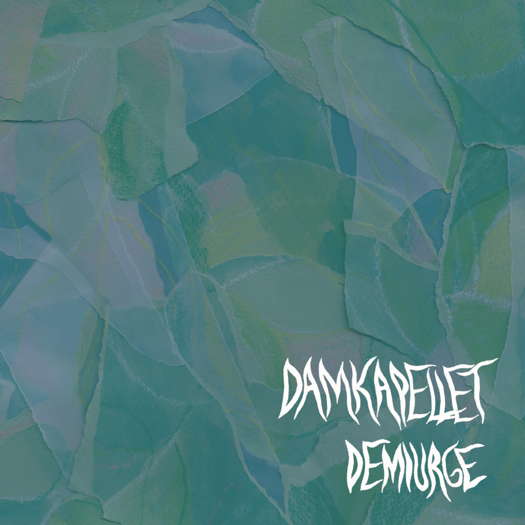 SPONSORED: An Outstanding Evening - Bill Newman listens to American pianist Rorianne Schrade.
SPONSORED: An Outstanding Evening - Bill Newman listens to American pianist Rorianne Schrade.
All sponsored features >>
- Honegger
- Marvin David Levy
- Cyril Rootham
- Republic of Ecuador
- Black Lives Matter Plaza
- Jerry Brubaker
- Pernambuco
- Holmens Kirke
 DISCUSSION: John Dante Prevedini leads a discussion about Composers, individuals or collective?, including contributions from David Arditti, Halida Dinova, Robert McCarney and Jane Stanley.
DISCUSSION: John Dante Prevedini leads a discussion about Composers, individuals or collective?, including contributions from David Arditti, Halida Dinova, Robert McCarney and Jane Stanley.

The Collective as Artist
JOHN DANTE PREVEDINI listens to new music from the Danish music collective Damkapellet
'In every one of the performances featured on the album, sonic contributions from all performers are incorporated equally, organized along improvisational guidelines which themselves have been agreed on beforehand by a similar means of inclusive consensus.'
Demiurge is the recent release by Dacapo Records showcasing four new works performed by the Danish music collective Damkapellet; these pieces were co-created by the ensemble with composers Lo Kristenson, Randi Pontoppidan, Greta Eacott and Damkapellet member Kristine Lindemann. The album is available in CD and digital format, and the liner notes include background information, in English and Danish, on the compositional and performance process as well as visual excerpts from the works' scores. According to the booklet, the fourteen-member ensemble was founded in 2016 'to bring diversity to the Danish music scene by highlighting and performing music by artists who define themselves as women, non-binary or transgender'. Furthermore, the booklet notes that the ensemble 'has collectiveness at the foundation of every aspect of their work' and 'stands in opposition to the patriarchal classical music tradition and its hierarchical forms of creation'. To that end, the four pieces heard in premiere recordings on this album involve a significant element of improvisation, open-form structures, open instrumentation or some combination of these.
Since Damkapellet's intent is to transcend the hierarchical boundaries between composer and performer and between conductor and ensemble, my approach in this review is to hear each piece as a unified musical event facilitated by organized processes, rather than as the end product of a chain of distinct compositional and interpretive acts.
The album opens with PULS, composed by Kristenson with the ensemble, a work which focuses on sustained string tones with optional timbral variation introduced by singing in unison with the strings. In addition, as per the liner notes, 'fragments are passed from one musician to the next, connecting circular lines'. The result is a performance which feels completely unmetered and within which time is felt by means of pure texture and timbre. Over the course of twenty-one minutes, the music organically undulates between high and low registers, still and undulating pitch drones, slow and fast bowing pulses, loud and soft dynamics and what strike me as warm and cold timbres brought about by the blend of string harmonics and singing. The cumulative effect of these different layers of simultaneous variation creates a performance which is full of both thematic unity and continuous variety.
Listen — Lo Kristenson: PULS
(8.224741 track 1, 0:00-0:30) ℗ 2023 Dacapo Records :
The next track is the fifteen-minute eponymous Demiurge, composed by Randi Pontoppidan with the ensemble, for piano, percussion, strings, sub-bass recorder, live electronics and voices. Here, a series of sonic events - piano chords, closely recorded mouth sounds, sung syllables, string glissandi, bass drum hits, etc - are notated on a time grid by means of a color-coded graphic score. Yet the specifications leave much open to improvisation, and this openness is apparent in the recording. In the performance, a vocal soundscape consisting mostly of diatonic clusters gradually gives way to a frantic and energized climax of percussion and electronic sounds, before the listener is suddenly thrown back to the shocking tranquility of the work's opening. The overall effect of the audible form thus seems to suggest an existential meditation on causes and effects.
Listen — Randi Pontoppidan: Demiurge
(8.224741 track 2, 0:00-0:30) ℗ 2023 Dacapo Records :
The third track is the three-minute Further & Back for open instrumentation, composed by Kristine Lindemann with the ensemble. The work is an exercise in additive form, graphically notated as a series of thirty-eight sonic gestures in a steady pulse tempo and performed with all players reading the gestures in order of '1', then '1, 2', then '1, 2, 3', etc. Lindemann is quoted in the liner notes as specifying that, in performance, 'the players start together, but over time the counting of repetitions makes them fall out of unison; thanks to human error, the piece unfolds in an interconnected cacophony'. Since the players in this recording never seem to lose control of the underlying pulse tempo, the audible effect in this performance becomes one of a rhythmic canon, not so much a disorganized sound mass as a driving juxtaposition between contrasting layers of percussive figures.
Listen — Kirstine Lindemann: Further & Back
(8.224741 track 3, 0:00-0:30) ℗ 2023 Dacapo Records :
The album closes with Gestalt Minimal III, composed by Greta Eacott with the ensemble. The liner notes indicate that this work is part of a larger collection, Gestalt Minimal; the love songs. Furthermore, the booklet specifies that this work is conceived as deliberately 'irrational', with instructions to sing or play notes 'a little higher' or 'a little lower' than the notated pitch. It also specifies that the rhythmic structure is intended to be based on individual players' response to the sonic events in real time as they unfold. As with the other pieces heard on this album, the score employs an idiomatic form of graphic notation. The result over the course of twenty-two minutes is a piece having a very wide sonic arc, ranging from very loud to near silent and with strings, percussion and voices exploring a range of pitch, texture and timbre. The sounds at different times seem reminiscent of ocean waves, fireworks or rain, among other things. On the whole, especially within the context of its title, the work seems deep, emotionally complex and potent with buried meaning.
Listen — Greta Eacott: Gestalt Minimal III
(8.224741 track 4, 0:00-0:30) ℗ 2023 Dacapo Records :
On the whole, Demiurge is a release that showcases the power of process-based music to conjure a singular 'voice' out of a collective of musicians. In every one of the performances featured on the album, sonic contributions from all performers are incorporated equally, organized along improvisational guidelines which themselves have been agreed on beforehand by a similar means of inclusive consensus. By carefully structuring the guiding performance parameters in various ways, the Damkapellet collaborators are able to effectively coalesce themselves into one artistic mind with its own emergent sense of creative logic and personality. Put differently, not only have Damkapellet demonstrated an effective democratization of the creative process; they have also provided an ideal framework for using music as a vehicle of inclusion, dialogue and resolution. In this way, they have arguably succeeded in modeling their own post-hierarchical and collectivist mission through the medium of music, and in so doing they have set a high standard for similarly focused performance collectives worldwide.
Copyright © 25 April 2023
John Dante Prevedini,
Connecticut, USA



